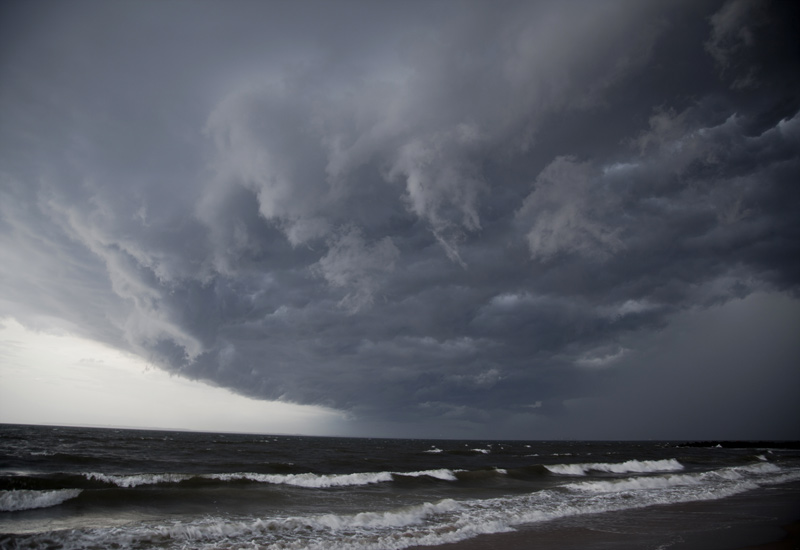
The discovery came about when a team of scientists based at the Georgia Institute of Technology in Atlanta hitched a ride on nine NASA airplane flights aimed at studying hurricanes. Previous studies carried out at the tops of mountains hinted that researchers were likely to find microorganisms at high altitudes, but no one had ever attempted to catalog the microscopic life floating above the oceans - let alone during raging tropical storms. After all, it isn't easy to take air samples while your plane is flying through a hurricane.
Despite the technical challenges, the researchers managed to collect thousands upon thousands of airborne microorganisms floating in the troposphere about 10 kilometers over the Caribbean, as well as the continental United States and the coast of California. Studying their genes back on Earth, the scientists counted an average of 5100 bacterial cells per cubic meter of air, they report online today in the Proceedings of the National Academy of Sciences. Although the researchers also captured various types of fungal cells, the bacteria were over two orders of magnitude more abundant in their samples. Well over 60% of all the microbes collected were still alive.
The researchers cataloged a total of 314 different families of bacteria in their samples. Because the type of genetic analysis they used didn't allow them to identify precise species, it's not clear if any of the bugs they found are pathogens. Still, the scientists offer the somewhat reassuring news that bacteria associated with human and animal feces only showed up in the air samples taken after Hurricanes Karl and Earl. In fact, these storms seemed to kick up a wide variety of microbes, especially from populated areas, that don't normally make it to the troposphere.
This uptick in aerial microbial diversity after hurricanes supports the idea that the storms "serve as an atmospheric escalator," plucking dirt, dust, seawater, and, now, microbes off Earth's surface and carrying them high into the sky, says Dale Griffin, an environmental and public health microbiologist with the U.S. Geological Survey in St. Petersburg, Florida, who was not involved in the study.
Although many of the organisms borne aloft are likely occasional visitors to the upper troposphere, 17 types of bacteria turned up in every sample. Researchers like environmental microbiologist and co-author Kostas Konstantinidis suspect that these microbes may have evolved to survive for weeks in the sky, perhaps as a way to travel from place to place and spread their genes across the globe. "Not everybody makes it up there," he says. "It's only a few that have something unique about their cells" that allows them survive the trip.
The scientists point out that two of the 17 most common families of bacteria in the upper troposphere feed on oxalic acid, one of the most abundant chemical compounds in the sky. This observation raises the question of whether the traveling bacteria might be eating, growing, and perhaps even reproducing 10 kilometers above the surface of Earth. "That's a big question in the field right now," Griffin says. "Can you view [the atmosphere] as an ecosystem?"
David Smith, a microbiologist at NASA's Kennedy Space Center in Florida, warns against jumping to such dramatic conclusions. He also observed a wide variety of microbes in the air above Oregon's Mount Bachelor in a separate study, but he believes they must hibernate for the duration of their long, cold trips between far-flung terrestrial ecosystems. "While it's really exciting to think about microorganisms in the atmosphere that are potentially making a living, there's no evidence of that so far."
Even if microbes spend their atmospheric travels in dormancy, that doesn't mean they don't have a job to do up there. Many microbial cells are the perfect size and texture to cause water vapor to condense or even form ice around them, meaning that they may be able to seed clouds. If these microorganisms are causing clouds to form, they could be having a substantial impact on the weather. By continuing to study the sky's microbiome, Konstantinidis and his team hope to soon be able to incorporate its effects into atmospheric models.



"By continuing to study the sky's microbiome, Konstantinidis and his team hope to soon be able to incorporate its effects into atmospheric models."
This is how things get destroyed... Nature works beautifully so long as man does not poke his dirty, stinky nose into the affairs of Mother nature. Once done then all hell breaks lose.